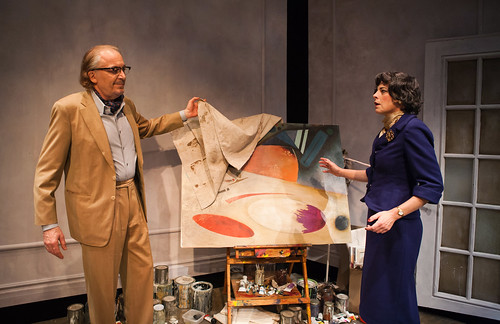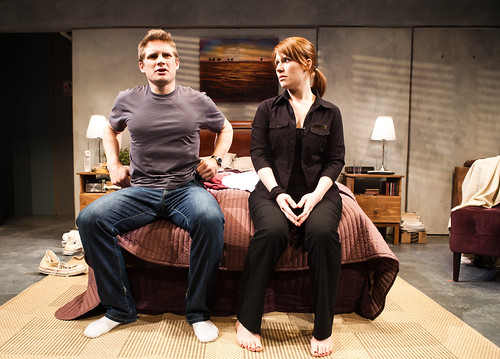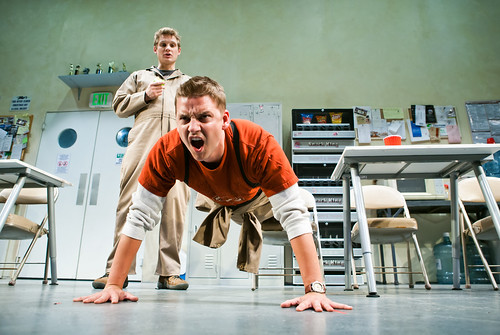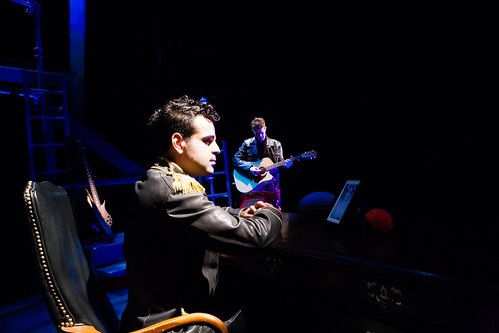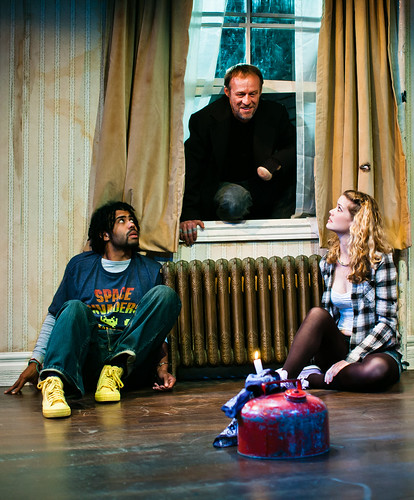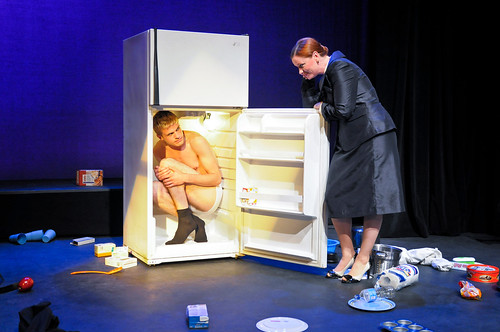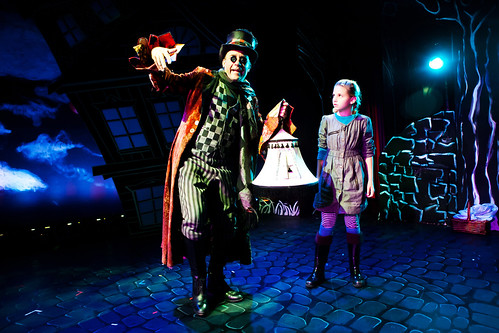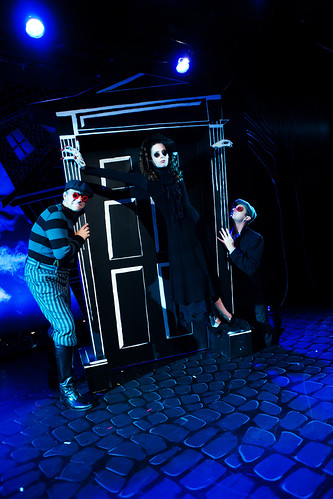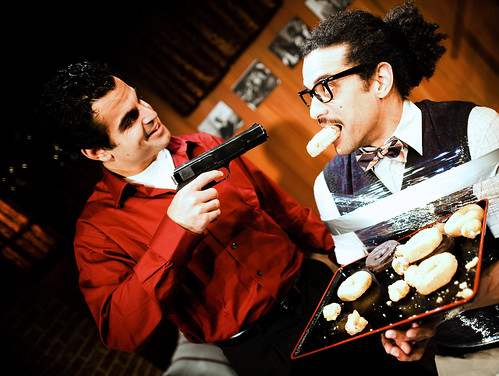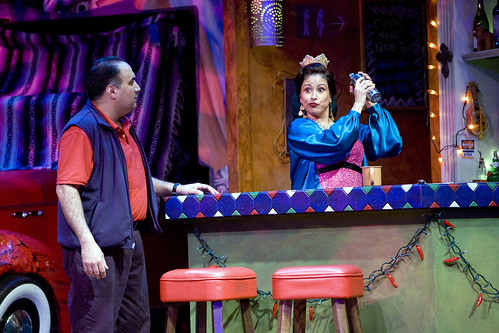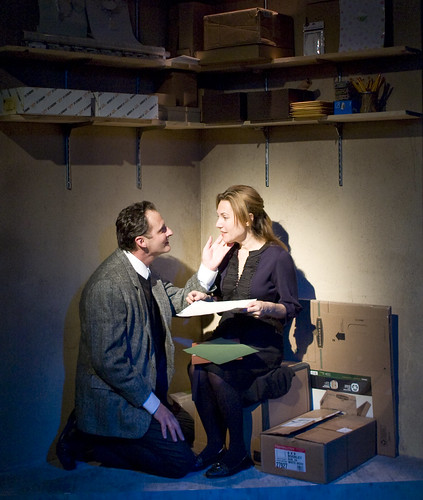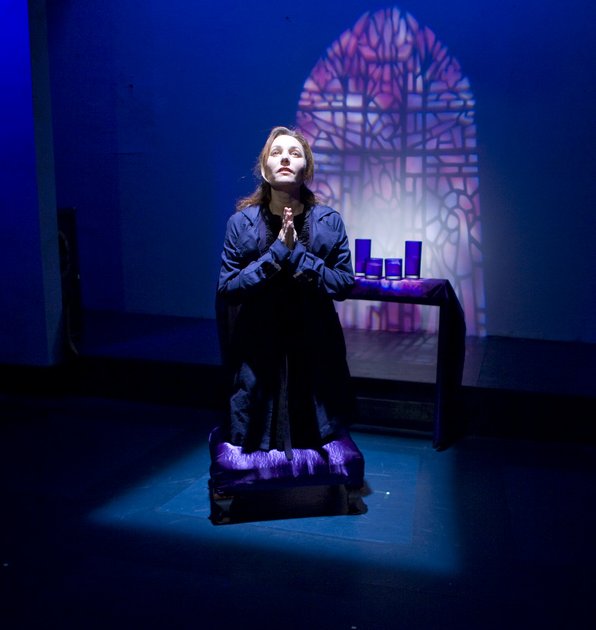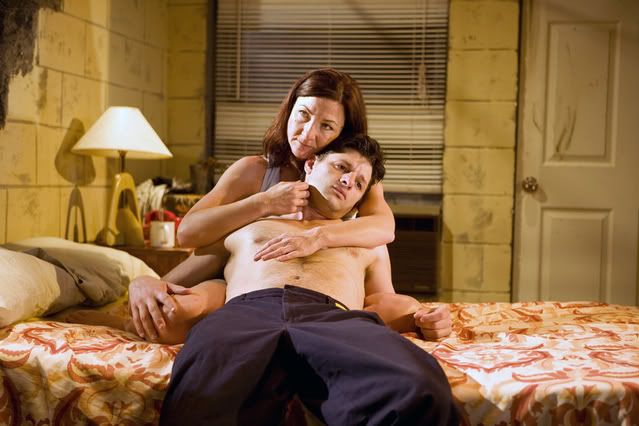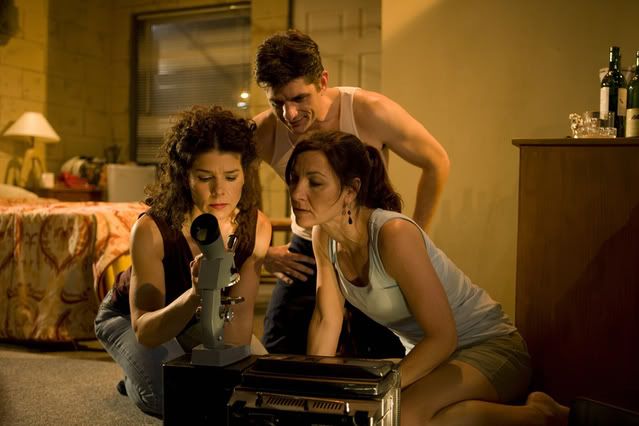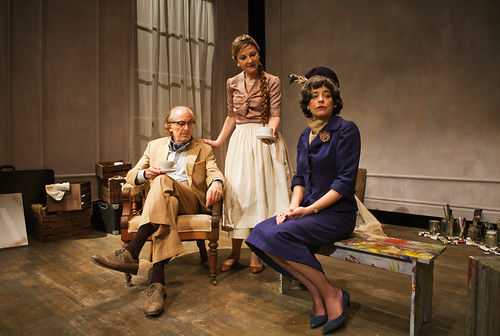
Ronald Guttman (left) is painter Rudolf Bauer, Susi Damilano (center) is Louise Bauer and Stacy Ross is Hilla Rebay in the world-premiere production of Bauer by Lauren Gunderson at the San Francisco Playhouse. Below: Ross as Hilla wants to know what made Guttman as Bauer stop painting. Photos by Jessica Palopoli
A mysterious chapter in modern art history receives some theatrical exploration in the world premiere of Lauren Gunderson’s Bauer at San Francisco Playhouse. If you’ve never heard of the abstract painter Rudolf Bauer, whom some considered a genius beyond contemporaries like Kandinsky and Klee, that may have something to do with the fact that the Guggenheim Museum in New York, which was built to display his work, kept his paintngs instead in the basement out of public view.
That’s one of the issues addressed in Bauer, a three-person drama by Gunderson, San Francisco’s most prolific and produced playwright. The other issues at hand involve the question of why Bauer, who survived a Nazi prison, stopped painting not long after arriving in the United States and how he navigated relationships with the women in his life: Baroness Hilla Rebay, who was his staunch advocate in the art world and probably the great love of his life, and Louise Bauer, who was hired by Rebay as Bauer’s maid but eventually became his wife and also a staunch advocate as illness brought Bauer closer to death.
Gunderson imagines a meeting – crafted with near-romantic comedy dexterity by Louise – between Bauer and Rebay, who have not spoken in a decade as an attempt to rectify the past and, perhaps, inspire Bauer to pick up the brush and paint again.
As we’ve come to expect from Gunderson, Bauer is full of intelligence, humor and passion. Bauer’s story is an interesting and sad one, exploring as it does, the difficult relationship between art, in its purest, most creative state, and the art world as it is ruled by ego and capitalistic greed. The issue here is not so much the sale of Bauer’s work but rather its ownership and how that impinges on an artist’s freedom and, consequently, the creative spark.
Director Bill English, who also designed the half-realistic/half-abstract painting studio set, elicits strong performances from Ronald Guttman as Bauer, Susi Damilano as Louise and Stacy Ross as Hilla (an acerbic woman described as “harmless as odorless poison”). There’s tension, connection and fire within this trio, and they remain captivating for the play’s 90 minutes.
The women actually end up being more interesting than Bauer, whose German accent sometimes renders his lines intelligible. What begins as a cat fight ends up as something much deeper and more honest, with Bauer in the middle. Early on, Rebay takes stock of the situation: “God, we’re two modernists and a maid. It makes no sense.”
Gunderson has fun with the tempestuous, love-hate kind of relationship between Bauer and Rebay, who blame each other for a great deal. For Bauer, she represents the end of his artistic life: “The spirit tends to wither when ravaged by a succubus,” he tells her.
There’s interesting use of video here (designed by Micha J. Stieglitz). For instance, when the characters are looking through a portfolio of Bauer’s work, we see what they see projected on the large rear wall of the set. But then there are moments when the video goes too far as when emotional moments between the characters are emphasized by large, animated swatches of color on the walls – as if the writing and the performances aren’t enough, we need visual underscore (which we don’t). Same is true of the musical underscore that comes in toward the end – unnecessary and distracting, turning the play into a wannabe movie bio pic.
The video gets a real workout at the end. In theory, the moment works, but it’s just too much. Video is just that – video, temporarily projected light and pre-constructed. The moment calls for absolute reality, something created by the actors themselves in the moment. English’s production gets fancy just when it needs to be at its most laid bare, and that robs Gunderson’s potent play of some emotional impact.
In a nice confluence of events, San Francisco’s Weinstein Gallery is hosting an exhibit of Bauer’s work called The Realm of the Spirit through April 30. Rowland Weinstein, who also made a documentary about Bauer, serves on the Playhouse board and is executive producer of the play. Click for more info.
And the story of Rudolf, Louise and Hilla goes on. This production, cast included, is taking the show on the road. Bauer moves off Broadway at New York’s 59E59 Theater Sept. 2 through Oct. 12.
No longer consigned to the basement, Bauer is back in the world.
FOR MORE INFORMATION
Lauren Gunderson’s Bauer continues through April 19 at the San Francisco Playhouse, 450 Post St., San Francisco. Tickets are $30-$100. Call 415-677-9596 or visit www.sfplayhouse.org.

